Archive for June 2008
Asus Xonar D2X Sound Card review
Silicon-Power 128GB 2.5-inch SATA II Solid State Disk
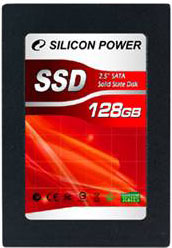 Silicon-Power today launches its SATA II 128GB 2.5-inch Solid State Disk. The SATA II interface has 3.0Gbps bandwidth which is doubled compared with the previous SATA I interface. Also, with the new
Silicon-Power today launches its SATA II 128GB 2.5-inch Solid State Disk. The SATA II interface has 3.0Gbps bandwidth which is doubled compared with the previous SATA I interface. Also, with the new» Read full story
Guru3D VGA charts updated
 Here at Guru3D we have something that is called the VGA charts. The VGA charts is simply put a selection of games in which we will show you performance numbers (measured by average framerate). The distinct difference review results and these charts is two-fold, in our reviews we can only show you 5 maybe 6 comparative graphics card results due to limitation. In the VGA chart you can see all the reference cards we have tested in an orderly and easy to comprehend manner.
Here at Guru3D we have something that is called the VGA charts. The VGA charts is simply put a selection of games in which we will show you performance numbers (measured by average framerate). The distinct difference review results and these charts is two-fold, in our reviews we can only show you 5 maybe 6 comparative graphics card results due to limitation. In the VGA chart you can see all the reference cards we have tested in an orderly and easy to comprehend manner.
Though not finished (the charts are a lot of work) I've just updated the bigger part of the charts with the newly released cards. Obviously there is still a lot of work in progress and after this week we hope to produce and include a nice selection of Crossfire results for the new Radeon series.
The VGA charts landing page can be found here:
http://www.guru3d.com/category/vga_charts/
» Read full story
Creative's 1st Wi-Fi player, iTunes rival being made
The device's wireless access will also be trumpeted for its media sharing features, which are still relatively rare among its competitors. On a local network, the ZEN X-Fi will have access to a host computer's own content to play it in another room. An Internet-based media pool, described as a Public Home Server, should also give access to at least some content at virtually any other Wi-Fi hotspot.
Reflecting its name, the portable player will have X-Fi audio technology borrowed from the company's sound cards and will use it either to restore lost detail in MP3s and other compressed files, as with most X-Fi devices, or to create a concert-like audio effect that puts the sound at the front of the user, even with earbuds or headphones.

An SD card slot will carry over from the original ZEN, but a built-in speaker will be new, according to Creative. Notably, not every ZEN X-Fi will have wireless abilities, suggesting a model range split that gives more expensive models the wireless option.
The release of the ZEN X-Fi should further mark the release of Creative's first jukebox software that plays more than audio. Named Creative Centrale, the software will also play and manage photos and videos and is considered integral to the ZEN X-Fi's sharing feature. Although details are still unclear at this stage, Centrale will allow users to rip DVDs and will create a home server for wireless music sharing similar to iTunes' sharing ability; it's also expected to play into the creation of the Public Media Server.
A release date for the new player is uncertain, though the now on-again ZEN X-Fi was recently hinted by a Creative official to appear no later than July, while epiZENter itself alludes to the possibility of an announcement within two days.

» Read full story
Cooler Master V8 CPU cooler launched
 Spotted already at the CeBIt early this year, Cooler Master officially introduced the V8 processor cooler. This unit features 8 heatpipes, four sets of modular aluminum fins and a copper mirror-finished based. The heatsink weighs 865g and has a 120mm fan.
Spotted already at the CeBIt early this year, Cooler Master officially introduced the V8 processor cooler. This unit features 8 heatpipes, four sets of modular aluminum fins and a copper mirror-finished based. The heatsink weighs 865g and has a 120mm fan.
Taking center-stage with its rugged industrial design, this wicked V8 monster has enough horsepower to perform its duties with any high-performance CPU while under the most critical heat conditions.
On top of its stylish design, the V8 Cooler includes some very rich features. For heat dissipation it is a smart 180W cooling solution, which is modularized by 4 separate sets of aluminium fins linked by 8 diagonal up-rise heat pipes. The V8 structural design allows for speedy heat transfer from its mirror-finished base to a large heat dissipation surface.
For optimal performance, Cooler Master placed a center mounted 120mm fan which blows cool air through the fins of the modularized heat sink, enabling ultimate cooling of the heat created by the CPU.
As an added value feature, the V8 comes equipped with an adjustable fan speed controller which allows you to adjust the fan speed manually from the back of the chassis, providing the most favorable balance between performance and noise level. The fan adjustment allows differentiation from 7V to 12V and fan speeds of 800-1800 RPM, allowing peak performance during game time and silent cooling while watching your favorite movies.
» Read full story
Camouflage Extreme Gaming Laptop
Pretty cool to see honestly, available in a variety of skins, the Cizmo CX1730M features a "2.26GHz Core 2 Duo processor, 2GB of DDR3 RAM, a 160GB SATA hard drive, WSXGA+ panel, a 2-megapixel webcam, NVIDIA's 512MB GeForce 8800M GTX and a plethora of ports." Prices start from $2249.
This one tips the scales at "only" 8.7-pounds, which actually isn't half bad for a unit this potent. Additionally, it looks as if you can order this puppy in a variety of flavors, including this camouflage version.
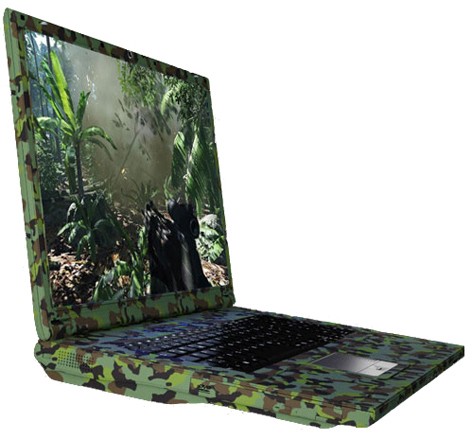
» Read full story
Download: GPU-Z 0.2.5
0.2.5
- Fixed BIOS Reading on HD 4870. Please do not flash non-128K BIOSes to GDDR5 cards
- Fixed GDDR5 bandwidth calculation
- Fixed texture fillrate on RV770 and RV730
- Added three extra on-die temperature sensors to RV770 monitoring
- Removed states.dmp file creation
- Fixed GPU activity readings on RV770
- Changed devices list order to be more intuitive (by bus number now)
- Added Shared Memory support, see the forum for more info
- Fixed more 190
» Read full story
Google going from desktop to your TV with media server
 In he old days, we used to watch a simple device called a television. Nowadays, all the stuff worth watching and listening to tends to be stored on or accessed through a computer. To help remedy this, google releases the Google Media Server.
In he old days, we used to watch a simple device called a television. Nowadays, all the stuff worth watching and listening to tends to be stored on or accessed through a computer. To help remedy this, google releases the Google Media Server.
Requiring at least Google Desktop 5, the Windows only Google Media Server lets users connected their PC with a UPnP-enabled device (works with the PlayStation 3) , thus making stored videos, music, photos, that are stores on the former, viewable via your TV.
Google Media Server is a Windows application that aims to bridge the gap between Google and your TV. It uses Google Desktop technology such as Desktop gadgets for the administration tool and Google Desktop Search to locate media files. All you need is a PC running Google Desktop and a UPnP-enabled device (e.g. a PlayStation 3). At the touch of a button, you can then:
- Access videos, music, and photos stored on your PC
- View Picasa Web Albums
-
Play your favorite YouTube videos
It's easy to install, so please try it out.
» Read full story
PhysX on ATI Radeon
The results didn't take long. With PhysX support enabled, he achieved a CPU score of 22,606 that resulted in a final 3DMark Vantage score of P4262. A similar system without the PhysX support should land at P3800. A significant difference.
Alas, Badit doesn't have access to a card from the Radeon HD 4800 family. We will keep an eye on the development over at NGOHQ, especially how AMD and NVIDIA will respond to this.
» Read full story
Radeon HD 4870 X2 photo's
The Radeon HD 4870 X2 R700 prototype card is out and definitely will beat the NVIDIA GeForce GTX 280 in 3DMark Vantage.
The R700 card is basically made up of two RV770 GPUs with 2x256-bit memory interface and will likely cater GDDR5 memories. We asked our sources about R700 in Computex and apparently AMD is going to let AIB partners to decide the specs themselves.
Board partners will set their own clock speeds, PCB design, memory types, cooler solutions etc. It seems there will be Radeon HD 4850 X2 and 4870 X2 cards differentiate by the memory type. The R700 card apparently doing pretty well at this stage scoring about X5500 in 3DMark Vantage Extreme preset while the GeForce GTX 280 card is scoring X4800. Both sides are still working hard on optimizing their drivers for the new architecture so probably we will see the performance to improve over time.
The black PCB of the HD 4870 X2 shows the RV770 couple, a PLX PCI-Express 2.0 bridge chip (look between the GPUs) and, front plus back, 1GB of Qimonda GDDR5 via 16 memory chips.
The Radeon HD 4870 X2 should be released in August.
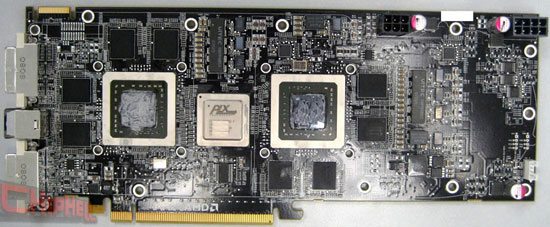
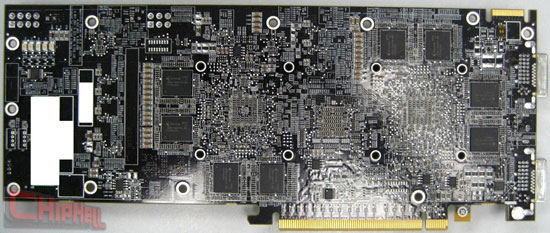
photo's are courtesy of chiphell
» Read full story
19-year-old 'fast flux' botnet agrees to plead guilty
 The author of a Trojan that broke new ground in botnet circles has
agreed to plead guilty to secretly infecting thousands of victims'
machines so that he could steal their personal data and launch attacks
on websites.
The author of a Trojan that broke new ground in botnet circles has
agreed to plead guilty to secretly infecting thousands of victims'
machines so that he could steal their personal data and launch attacks
on websites.
Jason Michael Milmont, 19, of Cheyenne, Wyoming, admitted to
creating the so-called Nugache Worm, a Trojan that spread through AOL
instant messenger and modified Limewire installation programs. Once
clicked on, the malware made unwitting users part of a botnet, which
Milmont used to steal user names, passwords and account numbers of
those who were infected.
Nugache was being circulated as early as early 2006 and spawned one
of the first botnets to use a decentralized system to send instructions
to drones, according to
security researcher Dave Dittrich. Rather than relying on a single
command and control channel, the zombie network used a peer-to-peer
mechanism to communicate. Such fast flux technology, as it eventually
came to be called, fundamentally changed the cybercrime landscape by
making it much harder to shut down botnets. (Other botnets such as
Storm also use fast flux.)
Over time, Milmont added new features to Nugache. A graphical user
interface made it easy to access infected machines from his home
server. It allowed him to issue a command to a single machine, which
would then transmit the command to other machines, until it had spread
through the entire network. The program contained a keylogger and was
also capable of sniffing sensitive information stored in Internet
Explorer to spare users the hassle of having to remember passwords for
online banks and other sensitive websites.
The software was invisible to the Windows task manager in versions
NT, XP and 2000. At any given time, Milmont had anywhere from 5,000 to
15,000 machines under his control.
According to a plea agreement signed by Milmont, he used his botnet
to launch distributed denial-of-service attacks against an unnamed
online business located in the Los Angeles area. The agreement went on
to document the way he used personal information he lifted from his
victims to fatten his wallet.
After sending a command that instructed infected machines to
transmit captured passwords and other information, he would order items
online and take control of victims' accounts by changing the addresses
and other details that were associated with them. In April 2007, for
example, he used stolen credit card information to make a $1,422
purchase from Hinsite Global Technologies and had items shipped to a
vacant resident in the Cheyenne area.
To prevent victims from discovering his scheme, Milmont replaced
phone numbers associated with compromised accounts with Skype numbers
he created and purchased using credit card data he had harvested from
his botnet.
Milmont faces a maximum of five years in federal prison and a fine
of $250,000. He's also agreed to pay almost $74,000 in restitution.
Milmont has agreed to appear in federal court in Cheyenne, where he
will plead guilty to one felony charge. The case was brought in Los
Angeles and was investigated by the FBI.
» Read full story
Bill Gates Retires leaves 33-year legacy
t an employee event held today, Bill Gates said farewell to the company he co-founded back in 1975. Gates will move from one giant to another, as he will turn his focus on the Bill & Melinda Gates Foundation, which is the world's largest charity. Reports say Gates and Microsoft Chief Executive Steve Ballmer delivered speeches to the assembled employees and press, each choking back tears as they spoke.
"There won't be a day in my life when I won't be thinking about Microsoft, the great things that we're doing and wanting to help," Gates told the crowds. The 52-year-old self-professed nerd will now work on finding vaccines and helping to finance projects in developing countries as part of the Foundation headed up by him and his wife. He will remain Microsoft's chairman and contribute to special technology projects.
Under Gates' oversight, Microsoft went from creating the operating system for IBM PCs, MS-DOS, before developing the first graphical user interface of that program, Windows, in 1985. More recently, the company came out with its Xbox gaming console in 2001 to fight Sony's entry into the market at the time, the PlayStation 2. Apple's iPod popularity led to the software giant to develop the Zune series of portable music and multimedia players in 2006.
Gates' various roles at Microsoft will be replaced by three individuals. The chief software architect is now Ray Ozzie, Craig Mundie will act as chief research and strategy office while Steve Ballmer, Gates' long-time friend and Harvard classmate, will assume chief executive officer duties.

» Read full story
Download: CPU-Z 1.46 released
CPU-Z is probably the best ever diagnostic tool that provides information on your CPU, including: processor name and vendor, core stepping and process, processor package, internal and external clocks, clock multiplier, partial overclock detection, processor features, supported instructions sets, L1 and L2 cache information, location, size, speed, and technology.
CPU-Z is a freeware that gathers information on some of the main devices of your system.
CPU
* Name and number.
* Core stepping and process.
* Package.
* Core voltage.
* Internal and external clocks, clock multiplier.
* Supported instructions sets.
* Cache information.
Mainboard
* Vendor, model and revision.
* BIOS model and date.
* Chipset (northbridge and southbridge) and sensor.
* Graphic interface.
Memory
* Frequency and timings.
* Module(s) specification using SPD (Serial Presence Detect) : vendor, serial number, timings table.
System
* Windows and DirectX version.
Download - click here.
» Read full story
OCZ Announces 3GB DDR2 SODIMM Kits
Not bad to have in the good old lappy. OCZ announced its new 3GB PC2-5400 SO-DIMM kits for notebooks. According to the company, 3GB (1GB and 2GB modules) is optimal for most notebooks with 32-bit operating systems; besides, 4GB would cost more.
Specifications:
- 200-pin, DDR2-667, unbuffered,
- 1.8V voltage
- CL 5-5-5-15 timings
- Available in 512MB, 1GB, and 2GB modules
- Available in 2GB, 3GB and 4GB kits
- Lifetime Warranty
- Part Numbers: OCZ2667512VSO (512MB), OCZ26671024VSO (1GB), OCZ2MV6672G (2GB), OCZ26672048VSO-K (2GB), OCZ6672MV6673GK (3GB), OCZ2MV6674GK (4GB)
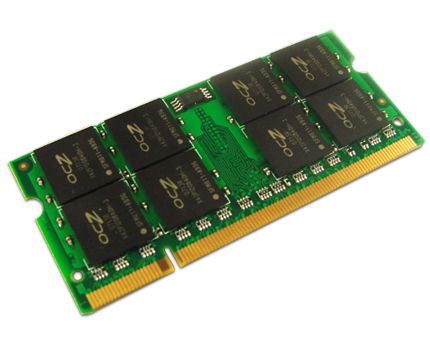
» Read full story
Video: Spore 'Will Wright' interview
Spore is slated to arrive on PC and Mac September 7, with a Nintendo DS edition, titled Spore Creatures, hitting on the same day. The game's creature creator will be available for PC and Mac on June 17, a move meant to help populate the title's vast online universe.
» Read full story
Diablo III Announced
Blizzard Entertainment today officially announced Diablo III, the newest entry in its critically acclaimed action role-playing-game franchise. The announcement was made during the 2008 Blizzard Entertainment Worldwide Invitational at the Porte de Versailles Convention Centre in Paris, France. A cinematic trailer and an extended gameplay demonstration with commentary from the development team introduced the game to the thousands of players in attendance.
Diablo III will pick up the story twenty years after the events of Diablo II. Mephisto, Diablo, and Baal have been defeated, but the Worldstone, which once shielded the inhabitants of the world of Sanctuary from the forces of both the High Heavens and the Burning Hells, has been destroyed, and evil once again stirs in Tristram. Playing as a hero from one of five distinct character classes, players will acquire powerful items, spells, and abilities as they explore new and familiar areas of Sanctuary and battle hordes of demons to safeguard the world from the horrors that have arisen. The first two characters classes -- the barbarian and the witch doctor -- were shown as part of the announcement at the event today in Paris.
Diablo III will feature a custom 3D-graphics engine to render lush indoor and outdoor areas of Sanctuary with a high level of detail and vivid special effects. The game's physics-enhanced environments will be interactive and destructible, offering traps and obstacles that create added danger for players and monsters alike. These elements, along with a new quest system and random scripted events, will be integrated into the game's random-level generator, giving Diablo III the ultimate combination of dynamic gameplay and replayability. Cooperative and competitive play will be available online through an upgraded version of Blizzard Entertainment's renowned online gaming service, Battle.net.
» Read full story
AVG disguises fake traffic as IE6
In late February, AVG paired its updated anti-virus engine with a real-time malware scanner that vets search engine results before you click on them. If you search Google, for instance, this LinkScanner automatically visits each address that turns up on Google's results page.
According to the company, more than 20 million people have
downloaded the new AVG 8, and this has caused a huge up-tick in traffic
on sites across the web, including yours truly. Because the
scanner attempts to disguise itself as a real live human click,
webmasters who rely on log files for their traffic numbers may be
unaware their stats are skewed. And others complain that LinkScanner
has added extra dollars to their bandwidth bill.
Daniel Brandt, who runs Wikipedia Watch,
estimates that LinkScanner traffic to the site has outstripped
legitimate clicks by nearly ten times. In this graph, the pink line
represents suspected LinkScanner scans, the blue line legitimate clicks:
When we first told the tale
of AVG's fake traffic earlier this month, we pointed out that if
webmasters were wise to the problem, they could filter LinkScanner
visits from their log files. Each scan left a unique user agent:
"Mozilla/4.0 (compatible; MSIE 6.0; Windows NT 5.1;1813)."
But over the weekend, the company changed this user agent on the for-pay version of AVG 8. It appears that scans now use these agents as well:
Mozilla/4.0 (compatible; MSIE 6.0; Windows NT 5.1; SV1)
User-Agent: Mozilla/4.0 (compatible; MSIE 6.0; Windows NT 5.1; SV1)
User-Agent: Mozilla/4.0 (compatible; MSIE 6.0; Windows NT 5.1;1813)
Judging from the log files of two separate web sites, including
Wikipedia Watch, the first agent is by far the most common. Which is
bad news for webmasters. That's also the Internet Explorer 6 user
agent. Unlike the other two - and the original "1813" agent - it's a
perfectly valid agent that may turn up with real clicks.
AVG's chief of research Roger Thompson says the for-pay LinkScanner is only
using the IE6 user agent. Presumably, the company believes this is more
likely to fool malware exploits. "There are still ways for concerned
web masters to filter LinkScanner requests out of their statistics," he
told us over email. But he did not acknowledge that this could clip legitimate traffic as well.
Many webmasters may have no choice but to abandon log file analysis,
adopting alternative tools from companies like Google, Yahoo!,
comScore, or Nielsen NetRatings. And these tools have their drawbacks.
comScore's service tends to underestimate traffic from daytime work
machines. And if you go with Google Analytics, you have to tag your
pages with JavaScript - and share your traffic numbers with Google.
Plus, these tools won't solve the bandwidth issue.
In an effort to fix this problem, one web master advocates
redirecting AVG scans back to AVG's site. "Many webmasters simply tell
LinkScanner to scan AVG's site instead, so their site gets marked as
malware free every time - while AVG gets handed the extra bandwidth
cost," says the webmaster of TheSilhouettes.org.
But this assumes that AVG is using a unique agent. And at the
moment, it's not. The send-it-back-to-AVG method may redirect
legitimate clicks as well.
Which gets to the heart of the matter: AVG's security philosophy is
fundamentally at odds with webmaster peace of mind. The company wants
to scan search results, and it wants to scan them in a way that's
difficult to distinguish from real traffic. "In order to detect the
really tricky - and by association, the most important - malicious
content, we need to look just like a browser driven by a human being,"
AVG chief of research Roger Thompson has told us.
And if that causes problems for webmasters, Thompson says, so be it.
"I don't want to sound flip about this, but if you want to make
omelets, you have to break some eggs."
Clearly, the company doesn't fully realize the importance of web
analytics. "Web analytics is about finding trends which can help online
marketers/webmasters improve things for their visitors and their
businesses," says Steve Jackson, co-chair of the International Web
Analytics Association. "It's a big part of the whole online ecosystem
in a fast growing up industry.
"No-one wants spyware or viruses, and AVG does provide a useful
service which is getting better all the time. I wish, however, they
would take business needs into account before launching software that
makes life even more difficult for the people trying to do the
analytics. Web analytics is not easy at the best of times, and this
kind of thing from AVG just compounded the problem.
"In order to make an omelet you have to crack some eggs. But a good
omelet has cheese, ham, peppers, mushrooms and all sorts of other
ingredients which AVG seem to have forgotten about."
But AVG continues to say it's working to solve the problem -
including the bandwidth issue. Referring to LinkScanner's new IE6-like
user agent, Thompson told us, "We intend to leave those in place until
we can find the right balance point which will allow us to continue to
provide the best possible protection for our customers, without
imposing too much extra bandwidth on websites."
» Read full story
